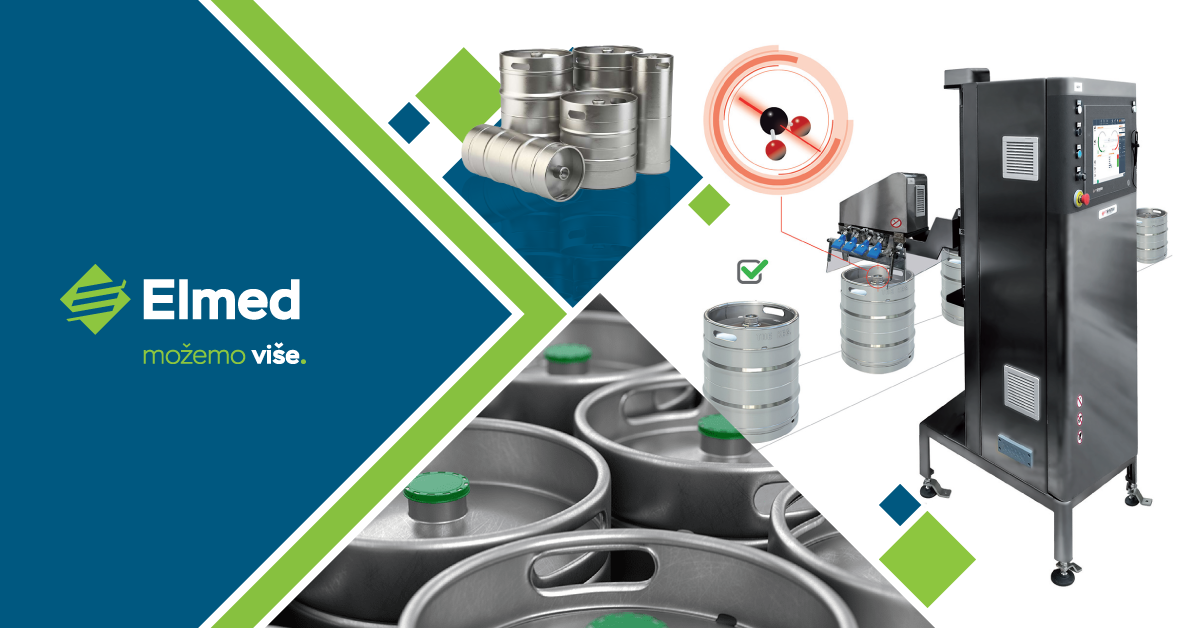The inovative in-line system for leak detection in kegs

The system is based on an innovative application of optical spectroscopy capable of detecting even very small quantities of CO2 molecules coming out of the valve.
Have you ever received a recall from the market because the beer inside the keg did not have the desired quality? Was there no more CO2 or was in insufficient quantity? Has a pallet been ruined by a beer keg that has lost product? Often the presence of leak and micro-leak in the keg valve area leads to these problems. Furthermore, the presence of beer for leakage in the area of the valve can be an easy point of mold contamination.
Today all this can be solved through an innovative in-line leak detection system, developed by FT System, which makes it possible to identify leakage and micro-leakage, without line stops, on 100 % of the production with greater accuracy than traditional inspections. The system is based on an innovative application of optical spectroscopy capable of detecting even very small quantities of CO2 molecules coming out of the valve and, therefore, of also identifying micro-leaks that were not detected at the time of production.
But let us see in detail what optical spectroscopy is, how it works and the advantages of its application on a beer keg filling line, compared to currently used inspection methods.
How optical spectroscopy works?
Optical spectroscopy studies the interaction between matter and electromagnetic radiation. To identify leaks and micro-leaks in kegs, we use a property of the CO2 molecule (in a gaseous state) to absorb specific wavelengths of IR light. The spectroscopic measurement technique is therefore optical, non-visual and without contact with the keg. The sources used are diodes and the sensors for signal acquisition are also in a solid state.
The main advantages of this technology for detecting CO2 in a gaseous state are:
- Very high reliability, due to no contact with the keg;
- Very high measurement sensitivity capable of detecting even a few CO2 molecules;
- Extreme measurement speed, useful in on-line applications;
- Low maintenance and long life of sources and sensors enabling measurements...
All these features allow for the online application of this technology, that can be installed on standalone machines as well as on an existing conveyor. The technology is not influenced by the type of packaging; it can be applied to PET, steel, or other materials.
How optical spectroscopy applies to inline keg control?
A keg that has a leak or micro-leak shows a substantial increase in CO2 concentration around the valve area. Therefore, analyzing this area to identify the increase in the presence of CO2 is the principle on which the inspection system is based to identify holes and micro-holes that cause leaks. The inspection machine, LDK 700, works with a system (sniff) sucking up the atmosphere around the keg filling valve. While the kegs run on the conveyor during production, any increase in the CO2 level is constantly detected through optical spectroscopy. The spectroscopic system installed in the LDK 700 IoT detects these CO2 variations with extreme speed and sensitivity and allows kegs with leaks to be easily identified. Thanks to the high sensitivity and speed of the sensors, detection is continuously performed with the kegs moving on the conveyor.
What are the innovation elements of LDK 700 compared to traditional systems?
Compared to traditional systems, LDK 700 directly detects leakage by identifying any gaseous CO2 that escapes from the kegs. CO2 is the target molecule for the presence of leakage; it is a direct inspection that is not influenced by external factors. Camera systems, which use vision as technology, on the other hand, can detect only the presence of foam, which does not always occur in case of micro-leakage. Other inspection systems such as vacuum-based ones must instead come in direct contact with the keg and cannot be used continuously; the line must momentarily stop to create vacuum around the valve and detect leaks.
Applications in the market
The principle is based on using the CO2 molecule in the gaseous state, as the target molecule for the presence of leaks and micro-leaks. In addition to beer kegs, this technology can be applied to products that contain CO2, such as soft drinks as well as sparkling wine.
What are the benefits for the market and production?
Applying optical spectroscopy as a leak detection system on a line of beer kegs allows you:
- to avoid complaints from the market; 100 % of production is inspected,
- to reduce waste with benefits in terms of the environment and sustainability,
- to guarantee the quality of the product and your company’s brand reputation with these production benefit,
- not to slow down the line to inspect it for leaks and micro-leaks,
- to reduce costs for undetected defective kegs, while optimizing production efficiency,
- to prevent pallets from being compromised in case of leaking beer kegs...
